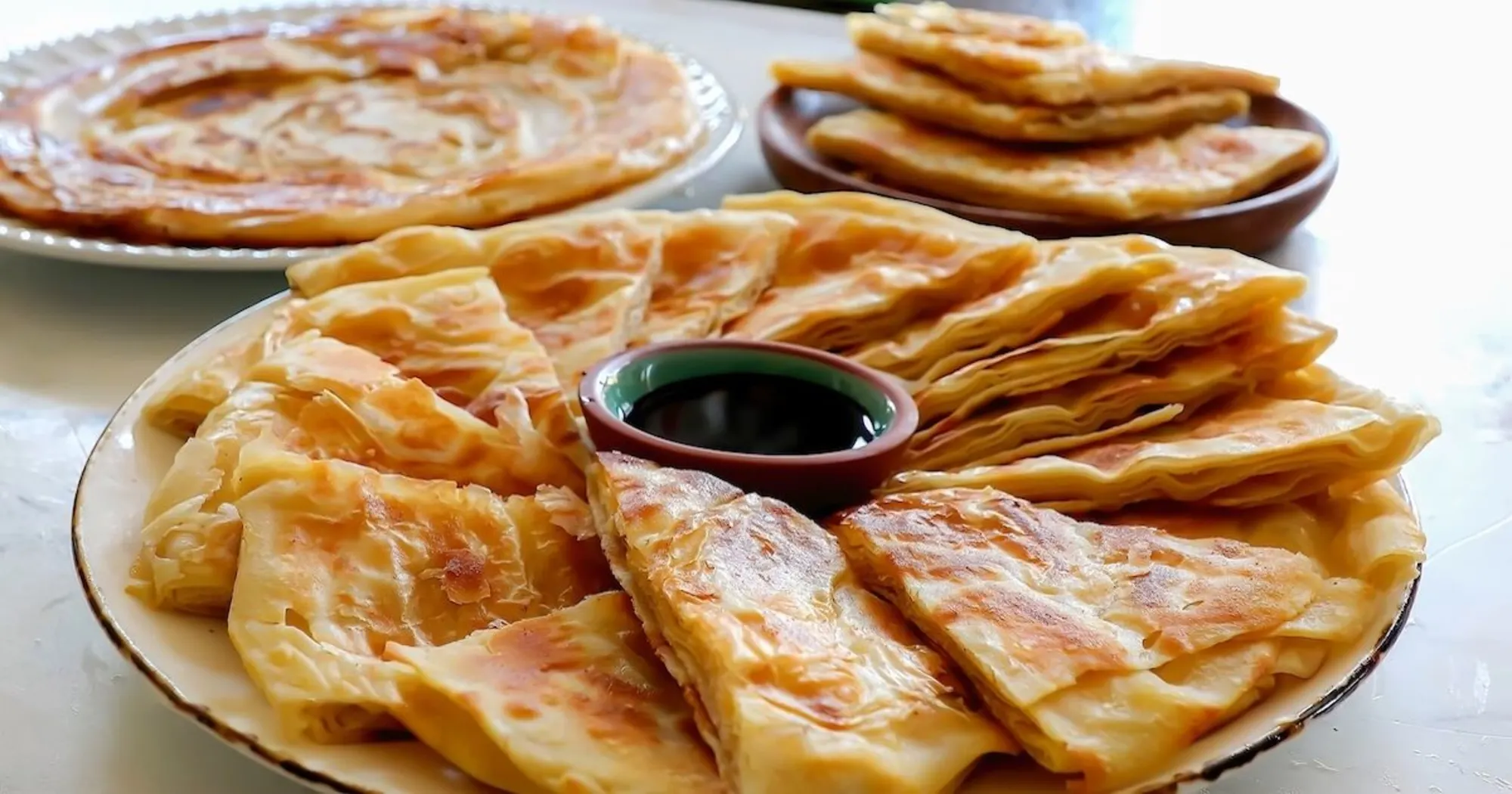
Feteer Meshaltet
Flaky layered pastry that can be served sweet or savory.
Ingredients
- •Flour
- •Butter
- •Salt
- •Water
- •Oil
- •Ghee
Instructions
Make dough
Prepare and rest the dough
Layer
Create multiple thin layers with butter
Shape
Fold and shape the layered dough
Bake
Bake until golden and flaky
Feteer Meshaltet, also known as Egyptian layered pastry, is a remarkable testament to the artistry of Egyptian baking. This flaky, multi-layered pastry is similar to a croissant in texture but uniquely Egyptian in its preparation and presentation. The name "meshaltet" comes from the Arabic word for "to pull or stretch," referring to the technique used to create its signature paper-thin layers.
Dating back to ancient Egypt, Feteer was so valued that it was often depicted in tomb paintings and offered to the gods. During the Pharaonic period, it was considered a luxury food item, often presented as an offering in religious ceremonies. Today, it remains a beloved staple in Egyptian households and is particularly popular during religious festivals and family gatherings.
The preparation of Feteer Meshaltet is a mesmerizing process that requires considerable skill and patience. The dough is made from simple ingredients - flour, water, and salt - but the magic lies in the technique. The dough is stretched incredibly thin, almost transparent, then brushed generously with ghee or butter between layers. These layers are folded multiple times, creating dozens of delicate sheets that, when baked, become crispy and golden. The stretching technique is so distinctive that in many parts of Egypt, you can watch street vendors skillfully tossing and spinning the dough in the air to achieve the perfect thinness.
One of the most fascinating aspects of Feteer is its versatility. While traditionally served plain or with a light dusting of powdered sugar, modern variations have evolved to include both sweet and savory fillings. Sweet versions might include honey, nuts, cream, or chocolate, while savory versions can be stuffed with meat, cheese, vegetables, or eggs. Some regions even serve it with molasses or honey for breakfast, while others prefer it as a savory main course.
In Egyptian homes and street-side establishments, Feteer is typically served hot from the oven, often accompanied by honey, cheese, or dips on the side. During Ramadan, it's a popular choice for suhoor (pre-dawn meal) as it provides sustained energy throughout the day of fasting. It's also a common sight at celebrations and festivals, where large sheets of Feteer are prepared to feed gathering crowds.
While undeniably delicious, Feteer Meshaltet is quite rich due to the generous amounts of ghee or butter used between layers. A single serving can contain between 300-400 calories, making it more of an occasional treat than an everyday food. The pastry is not suitable for those following a gluten-free diet due to its high wheat content. However, it's worth noting that the basic version (without fillings) is vegetarian-friendly. For those watching their fat intake, some modern bakeries offer versions made with less ghee, though purists might argue this compromises the authentic taste and texture that makes Feteer Meshaltet so special.
